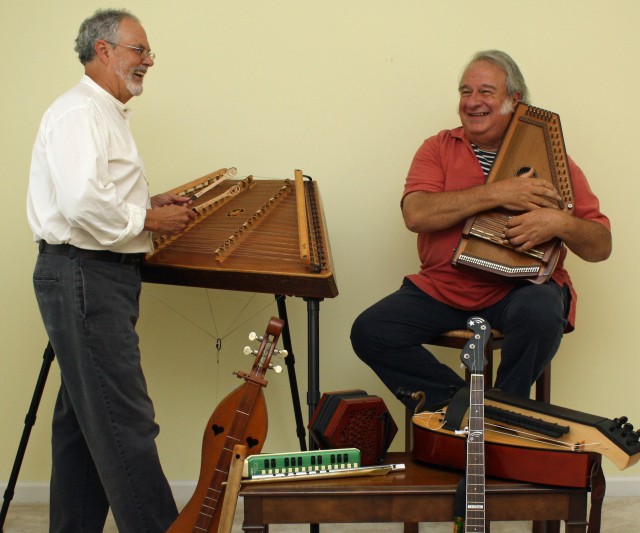When a musician is putting together a typical arrangement it’s good for him to 1) make sure he has a solid rhythmic pattern going, and he needs 2) a good chord structure moving along within that rhythm, and of course he needs 3) a straightforward melody. If they’re handled with taste and skill, this group of factors combine for a fine rendition of the piece.
However, there are often long notes at key points in the melody’s progress, and players like me crave an extra voice “singing along” during those long notes (and perhaps elsewhere as well) to add interest and color. I’ve found that there are a lot of ways to work with that, and I’m always working on these creative “fill parts,” so I thought I’d jot down a collection of ideas to consider if you want to. Here they are!
WHERE TO GET NOTES FOR FILL-INS:
- Built out of the scale
- Built out of the chord --- arpeggio or combination of chord notes
- Rhythmically related or contrasted
- Combination of chord notes and scale notes
- Echoing the note series of the melody
- Responding to the note series of the melody (extending it)
- Notes leading out of the ending notes of the previous phrase and into the beginning notes of the next phrase
HOW TO PLAY FILL-INS:
- More softly than the melody
- More loudly than the melody
- Getting louder or softer as a bridge from one phrase to the next
- As a separate statement than the melody
- Creatively contrasted to the melody rather than similar in tone
- Expressively phrased, like a colorful statement itself
- Lyrical in nature if that enhances the flow
- Like a duet, so the fill-in is appearing to be another player, not just the same player playing more notes
- For a good example of an arranger doing all sorts of colorful supportive fill with folk-like melodies, listen carefully to the different sections of the orchestra “singing” to each other in George Szell’s clear recording of Antonin Dvorak’s Slavonic Dances!
FILL-INS WITHIN PHRASES:
- Chord notes between melody notes: It’s good to play them more softly so they don’t compete with the melody.
- Small answering parts during longer melody notes: Again, make them contrast with the melody.
- Silence: Leave it hanging rather than play notes, in some situations.
INTROS AND CODAS:
- Opening and closing patterns that lead you into and out of the tune, perhaps built out of the note ideas of the tune, or perhaps not. I used the tune and chord movements to do this in “Away in a Manger”, “Cockles and Mussels”, & “Broom o’ the Cowdenknowes”.
- Use another tune as opening, closing, and/or interlude. My “Shady Groves” is an example: one short verse of “Shady Grove” in several places between other tunes in the medley.
ANOTHER OPTION --- AN ACTUAL MELODY SECTION THAT YOU COMPOSE AS AN INTERLUDE BETWEEN VERSES:
- Here’s where you really need to get inspired and come up with your own melody that somehow seems right even though it’s different than the main theme! (I’ve done this with “Ash Grove”, “America the Beautiful”, “Broom o’ the Cowdenknowes”, “Do You Love an Apple”, “O Little Town of Bethlehem”, “Erev Shel Shoshannim”, “The Water Is Wide”, “Three Ravens”, and “Star of the County Down”, in a variety of ways.)
- Perhaps you can do the same chords as the melody but come up with different melodic material, maybe even something that can later be played at the same time as the main melody, as I did with “Skyland” which goes with “This Is My Father’s World”, and “The Osprey Returns” which goes with “Star of the County Down”.
- A repeating pattern can be used for improvisational interludes between verses and at ends of tunes, such as what I did with “Cleansing Fountain”, “Samhradh, Samhradh”, "Beautiful Dreamer", and “The Mermaid”.
Perhaps you'll find some useful ideas in this discussion! If nothing else, I suggest that you do some exploring and experimenting! Don't be afraid to try new things or to make mistakes while trying! Don't be propagandized too much by the KISS (keep it simple, stupid) crowd! Some of the best popular music breaks that stark rule!
I plan soon to use an actual melody for a discussion of how I go about making up meaningful fill-in parts. Perhaps "The Broom o' the Cowdenknowes." Let me know any ideas you may have as well!





Comments